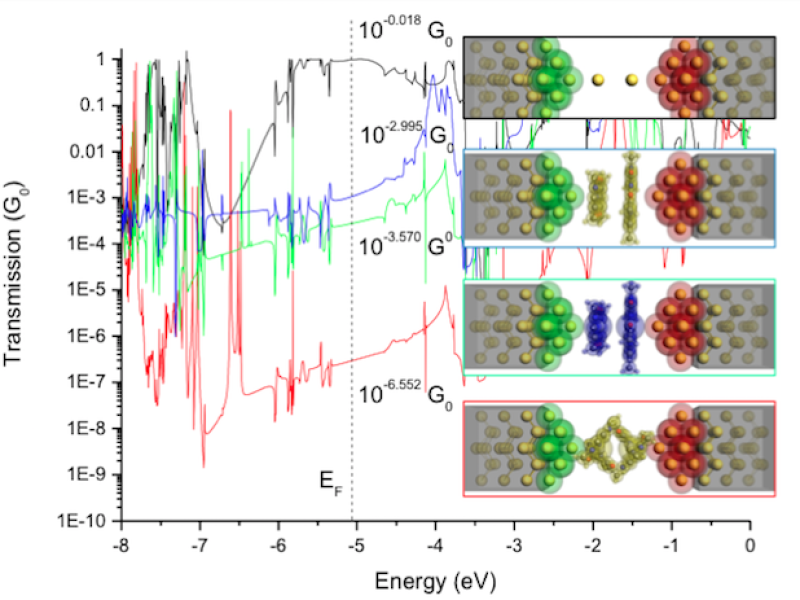Application of metallo-DNA in nanoelectronics
Advisor: Vladimír Sychrovský (IOCHB CAS)
Funding: Basic scholarship plus grant supplements if applicable
Website: https://www.uochb.cz/en/directory/154/vladimir-sychrovsky
Contact: vladimir.sychrovsky@uochb.cas.cz
Recent discovery of metal-mediated base pairs enabled preparation of M-DNA molecules that include various metals linearly chained along the helical axis of a DNA duplex. The M-base pairs like thymine-Hg-thymine and cytosine-Ag-cytosine fit in canonical DNA duplex and the metal array is thus shielded from solvent. The M-DNA is thus well-suited for constructing advanced molecular electronic elements like molecular wire, rectifier and switch. The PhD project is aimed at theoretical modelling of physicochemical properties of various M-DNAs including the charge-transport properties towards optimal performance of the functional molecules as nano-electronic devices. The theoretical research is conducted in close collaboration with experiment in domestic and Japanese laboratories.
References:
[1] Tanaka Y., et al. Structures, physicochemical properties, and applications of T–HgII–T, C–AgI–C, and other metallo-base-pairs” Chem. Commun., 51, (2015), pp 17343-17360.
[2] Dairaku T., Furuita K., Sato H., Sebera J., Nakashima K., Ono A., Sychrovsky V., Kojima C., Tanaka Y., “Hg-II/Ag-I-mediated base pairs and their NMR spectroscopic studies”, Inorg. Chim. Acta, 452, (2016), pp 34-42.
[3] Sebera J., et al. Formation of a Thymine-Hg-II-Thymine Metal-Mediated DNA Base Pair: Proposal and Theoretical Calculation of the Reaction Pathway, Chem.-Eur. J., 19, (2013), pp 9884-9894.
[4] Yamaguchi H., et al. The structure of metallo-DNA with consecutive thymine-Hg-II-thymine base pairs explains positive entropy for the metallo base pair formation, Nucleic Acids Res., 42, (2014), pp 4094-4099.
[5] Benda L., et al. On the role of mercury in the non-covalent stabilisation of consecutive U-Hg(II)-U metal-mediated nucleic acid base pairs: metallophilic attraction enters the world of nucleic acids, Physical Chemistry Chemical Physics, 13, (2011), pp 100-103. Kratochvilova I., et al. Charge Transport in DNA Oligonucleotides with Various Base-Pairing Patterns, Journal of Physical Chemistry B, 114, (2010), pp 5196-5205.
[6] Kratochvilova I., et al. Theoretical and Experimental Study of Charge Transfer through DNA: Impact of Mercury Mediated T-Hg-T Base Pair, Journal of Physical Chemistry B, 118, (2014), pp 5374-5381.


